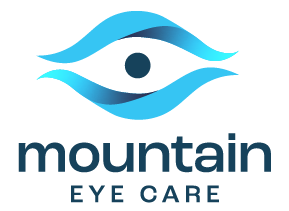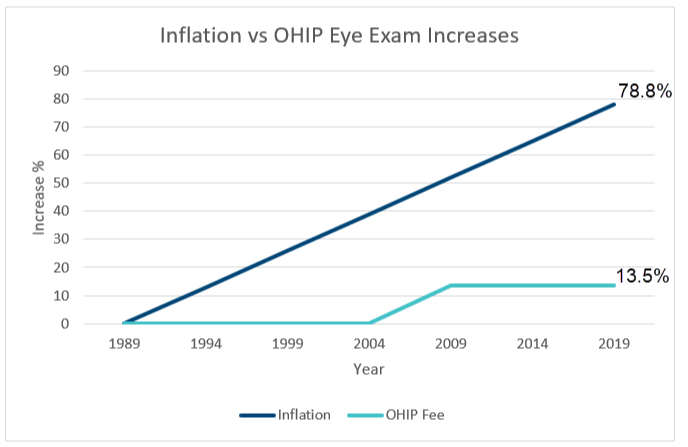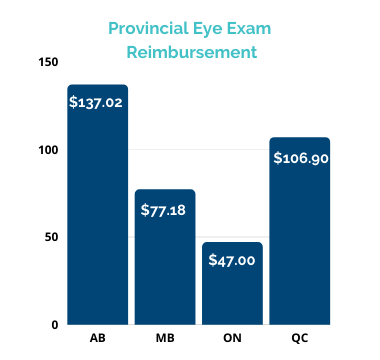Digital Eye Strain
The golden era of business has long since passed. The shuffle and bussell of papers being distributed to disseminate information across a company is dead. With the advancement of technology, computers, email, video chat, and virtual workspaces. The amount of time we spend staring at a screen has seen a significant increase over the past decade. With screens on our phones, tv’s, computers, cars, and billboards, our eyes are under constant attack. Issues that arise in one’s eyes from having too much screen time on the computer is known as Computer vision syndrome.
A common question is how do computers affect your vision? With a regular factory set computer your eyes repeatedly unfocus and refocus along the same line of sight. Your eyes fall into a repeated unnatural motion as you’re scrolling up and down. Reading articles or checking out your social media account. With the introduction of Gifs and automated video play different lights and flashes have an effect on your eyes whether you know it or not. Also, most people forget to blink, due to the constant shifting of our eyes. This causes eyes to dry out and begin to blur.
If your worried about potentially having computer vision syndrome here are some common symptoms to keep an eye out for:
- – Avoid eye strain. When eyes strain the muscles can experience fatigue, soreness, pain, burning, possible tingling sensation.
- – Blurred vision is also a symptom of strain and can cause double vision.
- With the consistent shifting of focus leads to dry eyes. Which leads to irritability and redness.
- – Bank, neck and shoulder pain are another thing to pay attention to. Being that our ocular muscles and nerves wire into the brain and neck means pain in your eyes can lead to pain in your body.
Another aspect to look into when trying to be mindful of your eye health is your environment. Are you in a well naturally lit room? Poor lighting can lead to enhanced strain on your eyes. Lighting is key, too much artificial light or too little light can be detrimental to eye health. Glare and reflections are a major trigger when it comes to computer eye syndrome. Taking time to go through your computer’s visual settings, you can adjust the brightness, the tint and even color and font size to help reduce strain on your ocular muscles.
Some of the most common denominators the people with computer eye syndrome share are :
- – Spending a high amount of hours on a digital device or screen.
- – Sitting too close to the digital screen
- – Have pre-existing eye conditions
- – Not mindful of blinking
- – Screens set to wrong angles and distances.
Several other conditions may be aggravated by spending too much time in front of a computer screen. Constant eye strain that lasts for hours or days can indicate that one of these conditions is present.
Dry eye syndrome/disease is a common condition that may contribute to eye strain. When you have dry eye condition, your eyes are not adequately lubricated, whether you’re viewing a screen or looking at something else. Dry eye syndrome may be treated with over-the-counter or prescription-strength eye drops.
In today’s digital age, it’s hard to imagine going a day without looking at a screen. Scrolling through social media, checking work email, or streaming our favorite show, screens have become integral to our lives. However, while screens offer many benefits, they can also cause a number of underlying conditions if used too much.
One such condition is myopia or nearsightedness. If left untreated, myopia can cause your eyes to feel strained and tired all the time. More constant eye strain, or eye strain that doesn’t appear to be directly connected to looking at a computer screen, maybe a sign of myopia. Contact lenses or prescription-strength glasses are a good go-to treatment if you’re nearsighted.
Another condition that can be aggravated by too much screen time is farsightedness or hyperopia. If you have it, you can see items far away and yet have difficulty seeing things close by, such as books, cell phones, and computer screens. While there is no one-size-fits-all treatment for farsightedness, eyeglasses or contacts may help improve your vision.
As we spend increased time looking at computer screens – whether it be a computer, phone, or TV – it’s important to be aware of the potential health risks. One such risk is developing an underlying condition caused by too much screen time.
Two common conditions associated with screen time are presbyopia and astigmatism. Presbyopia is a vision condition where your eyes lose the ability to focus on nearby objects, commonly occurring in people over 40. This is due to the eyes’ lenses becoming less flexible with age. Astigmatism, another common condition, is the result of a misshapen cornea. The lens of the eye with this condition has an irregular curve, which changes the way light passes to your retina, causing blurry or distorted vision.
Both conditions can cause eye strain, a common symptom associated with extended screen time. Eye strain may lead to headaches, fatigue, and even neck pain.
If you’re experiencing any one of these noted symptoms, it’s important to take a break from computer or TV screens and give your eyes a chance to rest. Try going for a walk outdoors or reading a book instead. And if the symptoms continue or worsen, be sure to see an optometrist.
Screen time can have many benefits, but it’s important to be aware of the risks associated with overuse. By being mindful of how much time we’re spending in front of screens and taking breaks when necessary, we can help keep our eyes healthy and avoid any potential problems.
So if you’re experiencing eye strain that seems to be unrelated to your current activity, take a break from the screen and see your doctor. Chances are there’s an underlying condition causing your discomfort that can be treated!


